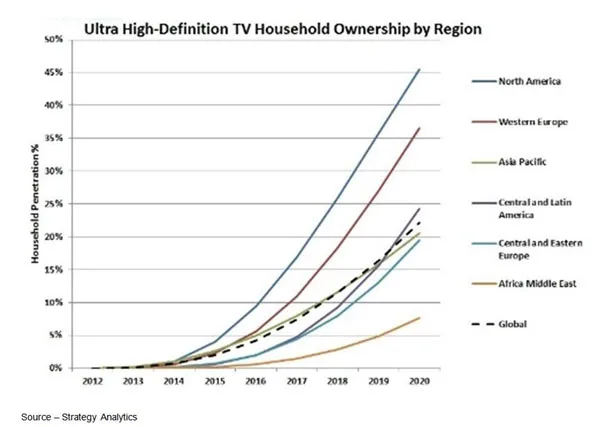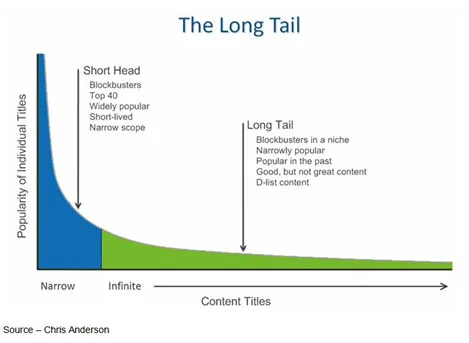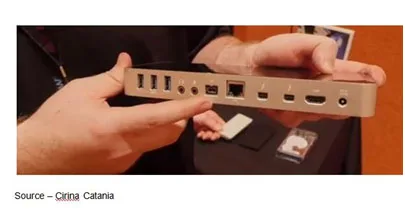Indie Filmmakers Grow in Importance at NAB Booths, Sessions

You didn’t have to be a Jedi at NAB (National Association of Broadcasters) to know there was a giant tear in the M&E (media and entertainment) industry this year.
Industry generals and soldiers were running everywhere trying to figure out how they could get their stuff on the IP (Internet protocol) OTT (over the top) space ship.
And they were trying to figure out how to hold off the growing army of Indie film/documentary producers. Sorry guys, ain’t gonna’ happen; deal with it!
You couldn’t turn around without bumping into an independent (or moonlighting) filmmaker, editor, FX (special effects), audio or post person.
I’m partial to these people because they’re the men/women who have the eye of the tiger to change the industry, change the world or at least shake it up a bit.
They were at the Adobe and Content Creators parties but the best gathering was at the annual SuperMeet where you could see them absorbing all of the information they could gather, make new friends and renew past relationships.
 It’s All 4K – While some people still claim 4K is a passing fad like DVDs and 3D, the consumer hasn’t been listening. 4K UHD TV sets are being purchased for traditional and OTT viewing and people are using 4K ready computers, tablets and smartphones for viewing. Little wonder that all of the discussion at NAB centered on 4K cameras, 4K production/workflow, high- capacity content storage and struggling with 4K distribution.
It’s All 4K – While some people still claim 4K is a passing fad like DVDs and 3D, the consumer hasn’t been listening. 4K UHD TV sets are being purchased for traditional and OTT viewing and people are using 4K ready computers, tablets and smartphones for viewing. Little wonder that all of the discussion at NAB centered on 4K cameras, 4K production/workflow, high- capacity content storage and struggling with 4K distribution.
They had a lot of reasons to be optimistic because:
- UDH TV set sales were on the proverbial hockey stick curve.
- Traditional, long-form viewing (movies/TV on the screen) had dropped 13 percent worldwide in every age group.
- OTT (over the top) viewing on all connected devices was growing steadily and the channel options were hunting for new, different content.
- 4K screens are not just TV set viewing they are computer monitors, tablets, smartphones – all growing viewing/consumption options.
- With low-cost, high-quality 4K cameras like those from Blackmagic, Adobe’s cloud production tools and economic SSD/HD storage; they saw a world of opportunities.
Leichtman Research reported that online video and streaming were having a major impact on the growth of the connected 4K TV and OTT markets. More than 40 percent of U.S. households have at least one connected set to take advantage of the depth and breadth of high-quality content.
The rapid move of HBO, CBS, Netflix, ESPN, Sony, Disney and almost every television and movie provider will have a profound upward impact on directly connected sets Leichtman officials commented.
Qui-Gon Jinn warned, “Feel, don’t think. Trust your instinct.”
While traditional network TV and Hollywood are becoming more risk averse, the Indie filmmakers are used to operating without a safety net.
Of course TV networks, stations or cable operation have more than a few reasons to be overly cautious. It was only a couple of years ago that the government mandated that they had to upgrade from SD (standard definition) to HD (high definition) production and distribution.
In addition, they’re seeing their standard audience of traditional linear TV shrinking before their very eyes.
New entrants, regardless of their brand, will have to prove their service quality to consumers to capture market share Accenture executives recently noted. New brands such as Apple, Netflix, Amazon and Google, scored significantly lower than traditional broadcasters; so if broadcast and studio executives can adjust their focus to large niche audiences with tons of content rather than a limited offering to the mass audience, they may be able to survive and even thrive.
Outlets Everywhere – As cable companies gradually lose control over what people watch, when they watch it and on what device they use, a ton of new distribution and enabling opportunities have emerged for content producers, owners and consumers. The big challenge for most of the owners is how to make money on their content. For consumers, it’s all about determining what they want and don’t want.
Whether it ends up on YouTube, iTunes, Amazon, Netflix or whatever, the days of network-controlled television is coming to an end on all fronts – production and distribution. It will all be focused on audience discovery.
People have gone beyond simply wanting control of their content (when they want it, where they want it, on the device they want) with thousands of content sources – mainstream and specialty.
Now they want/expect exceptional viewing (4K) and personalized media and entertainment.
Think about it. When was the last time you went online to watch a specific 18-minute TED segment and an hour plus later, you were still on the site?
It happens way too frequently for me!
TED is just a small part of the idea Chris Anderson advanced back in 2004 when he was editor of Wired.
While the concept was initially developed for products and markets, it more directly reflects the state of the M&E industry where people have global access to millions of pieces of content to be educated, informed, entertained.
In every Indie filmmaker there’s a fire in the gut to find an audience for his/her visual story.
They go way beyond the iPhone cat videos on YouTube; and according to eMarketer, the demand for greater volumes of quality video content will continue to grow:
- 85 percent of adult internet users watch content online at least once a week.
- More than 60 percent of adult internet users access the internet with their mobile apps and devices.
- More than 36 percent of users regularly download movie content to their computer, tablet or smartphone to view when/where they want.
- Comedy and educational segments are the most frequently downloaded/viewed.
According to Cisco’s Visual Networking index forecast, online video services will be more popular than social networking by 2017.
Long Tail – Chris Anderson first advanced the idea of the Long Tail back in 2004. Today, almost everyone understands how it directly applies to TV shows/series, movies, documentaries, specials and especially independent films. Once the content can attract the right audience – a big challenge today, large numbers of people in niche markets can view the material worldwide.
To meet the needs of the new audience, Indie filmmakers were everywhere at NAB looking for tools/products/solutions that would enable them to produce their projects quickly, easily, beautifully and economically in their own facilities.
And they looked hard because after all, it was their hard-earned money they were spending; and large, tricked out facilities weren’t the place they wanted to make their investments.
Storage – Solid state and hard drives – is their biggest expense because even on a small project, filmmakers are capturing (and storing) volumes of RAW 4K footage, according to Coughlin Associates:
- Footage per day – 6,000
- Frames per day – 96,000
- Storage per day (10 bits per pixel) – 1.59TB
- Shooting days – 7
- Total footage – 100,000
- Total storage – 27TB
The 10x ratio for final media for everything that is shot includes:
- Original Media exactly as shot
- Protection Clone (never to be touched)
- Worker Copy (files renamed, organized)
- Protection Copy of Worker
- Studio copy of Worker
- 3rd Clone of Worker for safety
- Output of project
- Clone and 2nd Protection
It isn’t as someone recently said to me, “Independent filmmakers could put everything on SSD (saving a ton of storage) if they weren’t so interested in making a buck off everything they shoot.”
Obviously, he has never seen a few frames or scenes disappear somewhere between the lens of the camera and post production.
As Qui-Gon Jinn said, “Your focus determines your reality.”
Even with a conservative estimate on the number of Indie filmmakers/producers on the planet, it’s easy to see why they spent a lot of time in the booths that had storage solutions that were fast, reliable and affordable.
Broadening Market – NAB and SMPTE opened up a broad range of educational/informational sessions at this year’s broadcast show to assist the fastest growing segment of the industry’s film and production group – independents. While many companies still think broadcast and film is a “big iron” house activity, the lower end of the marketplace (films with a total cost of well under $1M) is becoming big business with small groups and individuals creating outstanding work. And they all need storage.
By 2019, it’s estimated that the M&E industry will use more than 4,600PB (Petabytes) and that means a lot of silicon and spinning platters.
Most post-production set-ups look like a rat’s nest of Thunderbolt, USB 3.0, HDMI and “other” cables and the Indie’s workspace is no exception. That’s probably why so many folks who visited OWC’s booth looked at the Thunderbolt 2 dock and either said “I have it/just ordered it,” or “That’s the next thing on my gotta’ have list.”
Uncluttered Work Area – Whether they work in a network, studio or back bedroom; filmmakers and production people can use OWC’s Thunderbay 2 dock to tidy up the dizzying array of cables and eliminate the need to swap one cable for another to work on projects, saving time and cable connection damage.
The great thing about the NAB’s “new” focus is that the network/studio executives look at Indie filmmakers as though they’re pioneers and know exactly what they’re doing.
Perhaps some do, but others just have a visual story they need to get to the global community or a story they want to help others tell.
The key is they have a lower production cost, have access to reaching a global niche market and a dream that maybe, just maybe they’ll have an impact, make a difference.
Addressing the Indie filmmakers production and storage goals Qui-Gon Jinn said, “I can only protect you, I cannot fight a war for you.”
# # #